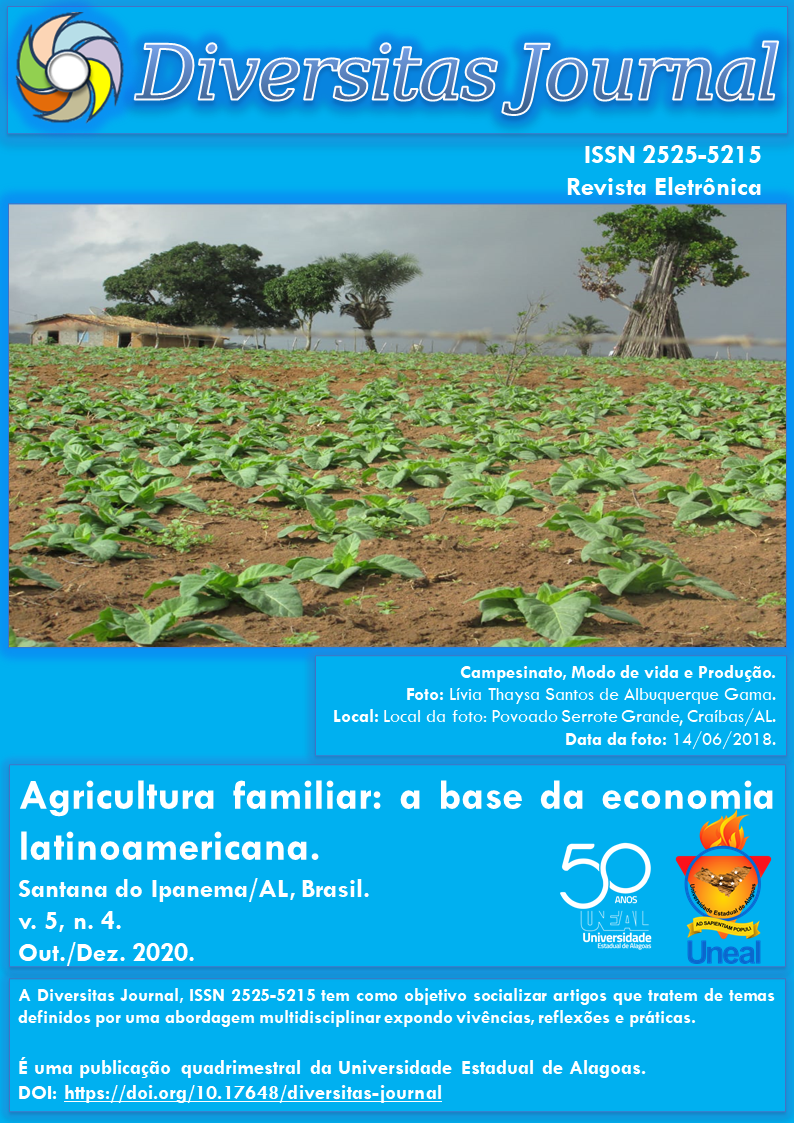Ocorrência de fungos na água e areia de praias urbanas
DOI:
https://doi.org/10.17648/diversitas-journal-v5i4-1255Abstract
ABSTRACT: The beaches of the city of Maceió are known worldwide for their natural beauty, attracting tourists from all over the world. However, a large amount of organic waste is released directly into its sands and waters, serving as a favorable source for the proliferation of fungi, compromising the health of bathers and visitors. This study aimed to investigate the occurrence of fungi in the water and sand of two beaches in the metropolitan region of Maceió - Alagoas, identifying the presence of pathogenic and potentially pathogenic agents. Twenty seawater samples and 20 sand samples were collected at randomly chosen points in the morning, during low tide. From each water sample, 1 mL was taken and cultured in Petri dishes containing Sabouraud Dextrose Agar (ASD) plus chloramphenicol. For the isolation of sand fungi, the soil suspension technique was used. The identification of fungi was carried out through the association of macroscopic and microscopic aspects of the culture, using microculture. 310 Colony Forming Units (CFU) were obtained on the two beaches, of which 290 CFU (94%) belonged to filamentous fungi and 20 CFU (6%) to yeast-like fungi. Of the 20 fungal genera identified, the most Aspergillus sp., Mycelia sterilia, Bipolaris sp., Penicillium sp. e Candida sp. The highest occurrence of fungi came from sand samples (163 CFU) compared to water (147 CFU). A wide variety of fungi that trigger fungal infections and allergic processes have been identified, suggesting continuous monitoring and the implementation of an environmental educational policy.
KEYWORDS: Beach sanitation, Mycoses, Environmental pollution.
Metrics
Downloads
Published
How to Cite
Issue
Section
License
Copyright (c) 2020 Jayane Omena de Oliveira, Igor Michel Ramos dos Santos, Davi Porfírio da Silva, Rodrigo José Nunes Calumby, Rossana Teotônio de Farias Moreira, Maria Anilda dos Santos Araújo

This work is licensed under a Creative Commons Attribution 4.0 International License.
The Diversitas Journal expresses that the articles are the sole responsibility of the Authors, who are familiar with Brazilian and international legislation.
Articles are peer-reviewed and care should be taken to warn of the possible incidence of plagiarism. However, plagiarism is an indisputable action by the authors.
The violation of copyright is a crime, provided for in article 184 of the Brazilian Penal Code: “Art. 184 Violating copyright and related rights: Penalty - detention, from 3 (three) months to 1 (one) year, or fine. § 1 If the violation consists of total or partial reproduction, for the purpose of direct or indirect profit, by any means or process, of intellectual work, interpretation, performance or phonogram, without the express authorization of the author, the performer, the producer , as the case may be, or whoever represents them: Penalty - imprisonment, from 2 (two) to 4 (four) years, and a fine. ”


















